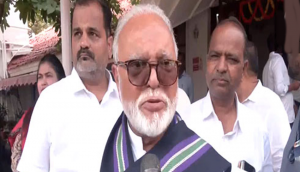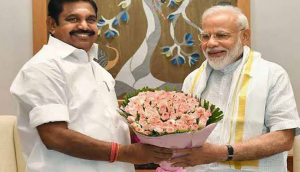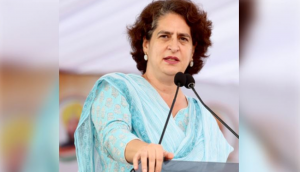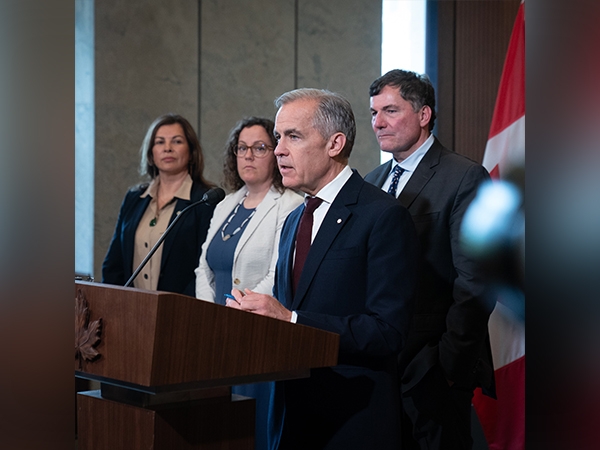Minorities support Cong, but it still loses. It needs an image makeover

- Even in its poll defeats in Kerala, West Bengal and Assam, the Congress got minorities\' support
- For example, 15 of its 26 MLAs in Assam belong to the Muslim community
- These states have the highest proportion of minorities in the country, barring J&K and Andaman & Nicobar
- The results mean that while minorities are still in the Congress\'s corner, it is losing its inclusive image
- Why the Congress needs to restore its inclusive, liberal image
- Are there any positives for the party to take from the recent Assembly poll debacles?
Some leading public intellectuals would want us to believe that the Congress party, India's own grand old party, remains the country's "most credible national alternative", and that it represents "a non-parochial idea of India".
If this is indeed true, then there is something very seriously wrong with the way the Congress leadership communicates with Indian voters.
At this moment, across the country, the voters don't seem to perceive that the party really stands for the values and principles attributed to it by these public intellectuals.
Losing the public perception battle
Consider the fact that the party's vote share dropped below the psychological 20% mark in the general elections to the Lok Sabha in 2014, with its tally in the Lower House slipping to an all-time low of 44 seats.
Two prominent regional parties - the Trinamool Congress and the All India Anna Dravida Munnetra Kazhagam (AIADMK), each of which has a presence only in one state each (West Bengal and Tamil Nadu, respectively), came within the striking range of matching the Congress's numbers in the Lok Sabha.
The Congress leadership has seemingly lost a key battle on the public perception front. The substance of its political rhetoric and polemics has not been in sync with the public mood.
The party brass has ended up conveying unintended messages to the voters. Its post-2014 poll debacle campaign against Narendra Modi and his government is perhaps a good example. It went on an extended rhetorical campaign on beef and intolerance. Did this campaign benefit the Congress electorally? If it did benefit anyone, the advantage might have gone to all the political rivals of the Congress, including the BJP.
The Congress's friendly rivals and some new-found partners thrive on electoral polarisation on caste and religious lines. There is nothing to suggest that the Congress benefits from such campaigns. In effect, the party ends up strengthening the divisive appeals of its electoral rivals of all hues.
Soon after the 1996 Parliamentary election defeat, the then-party spokesman VN Gadgil came out with a pamphlet. He wrote that the Congress is caught between two stools - Hindus think that the party is pro-Muslim, while Muslims think that the party is pursuing soft Hindutva. There have been conscious efforts to correct this image problem.
However, the party seems to have somewhere lost a sense of direction while taking on the BJP and countering its Hindutva plank in the country's political and electoral contexts.
The recently-concluded round of state Assembly elections is illustrative. It is acknowledged even by the Congress leadership that the outcome of these Assembly elections is very dismal for the party.
However, the reason for the defeats in Assam and Kerala, and the underachievement in Tamil Nadu go beyond the obvious anti-incumbency factor.
There are some important and not-so-obvious pointers from these elections which the leadership must consider in any fight-back strategy it might adopt for the party's revival.
Positives for the party
First, the positives. The party's credibility with the minority communities, particularly the Muslims, seems to stand resurrected, not just in a Congress-versus-BJP contest but even in the Congress-versus-others context.
Take the Assam results. The party won just 26 seats in the 126-member state Assembly - a dramatic fall from the 78 seats it held in the outgoing Assembly. In 2011, 10 of the 78 Congress legislators belonged the minority community, while this time, 15 of the 26 party MLAs are from the Muslim community - a staggering 58% compared to 13% in 2011.
This means that a significant chunk of Assam's Muslims saw Congress as a more viable alternative than even the Muslim-oriented AIUDF of Badruddin Ajmal. In fact, Ajmal lost his own seat Salamara South to a Muslim candidate from the Congress.
Given the fact that Muslim candidates are usually fielded by political parties in Muslim-dominated constituencies, it can be concluded that the Congress's ability to get its Muslim candidates elected has improved phenomenally in the just-concluded state Assembly elections in Assam.
The minority community has benefited from this, as its representation in the new Assembly has improved by one seat - there are 28 Muslim MLAs as against 27 in the last Assembly - though the new ruling alliance led by the BJP could elect just two Muslim MLAs.
A similar trend has emerged even in West Bengal. Mamata Banerjee's Trinamool Congress won nearly a three-fourths majority in the 294-member state Assembly, and the Congress, in its unusual alliance with the Left Front, managed to win 44 seats. But 18 of the 44 Congress legislators belong to the Muslim community, which is a very impressive 41% of the Congress tally.
In contrast, only 32 of the 211 Trinamool MLAs belong to the Muslim community, which is about 15%. The corresponding tally for the Left Front, the Congress's senior partner in their poll alliance, is just 22%. Obviously, the Congress's ability to win Muslim-dominated seats has been almost three times that of the Trinamool's. This is an improvement over the 33% success rate registered by the party in the state Assembly elections in 2011.
The trend extends to even Kerala. Fifty per cent of the Congress's 22 newly-elected MLAs belong to the minority Christian and Muslim communities. If the trend is extended to the Congress-led United Democratic Front in the state, 35 of the UDF's 47 MLAs belong to the minorities, which is 74%. Contrast this with the rival CPM-led Left Democratic Front's figures. The LDF won almost double the number of seats the UDF won - 91. Twenty-seven of these MLAs belong the two minority communities, i.e., about 30%.
In the last Assembly elections in 2011, which the Congress-led UDF had won, the share of minorities in the 38 seats the party had won was about 40%. In effect, the minorities' share has gone up impressively this time, notwithstanding the fact that the Congress suffered one of its worst defeats in the state in the face of an extreme anti-incumbency sentiment against it.
What emerges from the above is that even in the party's dismal performance in the three states, it probably averted a complete washout because of the large support it received from the minorities. This notwithstanding the fact that in Assam, there was a Muslim political outfit like AIUDF; a secular Trinamool Congress in West Bengal and an undisputed secular LDF in Kerala. But the Congress received more support from the minorities even in its time of anti-incumbency adversity.
Image correction necessary
Now, the gloomy side of the story. The party has suffered a severe setback in non-Muslim or non-minorities-dominated seats, be it in Assam, West Bengal, Kerala, or for that matter even in Tamil Nadu. It won just 11 out of around 75 such seats in Assam, 26 in almost 200 non-minority-dominant seats in West Bengal (of course, the Congress contested just 90 seats in the state), while the UDF in Kerala won just about a dozen seats outside the minority-dominated areas in the state.
If in West Bengal, the Trinamool Congress seems to have wrested the inclusive label from the Congress, the CPM-led LDF has done the same in Kerala. Both of them have won a fairly respectable number of seats in minority-dominated areas in their respective states, apart from having a cakewalk over the Congress in non-minority-dominated seats.
As a result, the Congress's fall has been steep in each of these states, as it was indeed in the Lok Sabha elections two years ago.
A bigger cause for concern for the party leadership should be that the recent round of elections happened in states where the proportion of the minority population to the total population of each state is the highest in the country, outside the tiny Andaman and Nicobar islands and Jammu and Kashmir.
Muslims account for 34.22% of Assam's population, 27.01% of West Bengal's population, and the minorities account for 44.94% of Kerala's population, according to Census 2011.
These states should be, in a way, relatively favourable for the party electorally, as compared to states such as Gujarat, Madhya Pradesh, Chhattisgarh and Rajasthan, where the minority population is below 10%. This probably explains why the Congress has found it difficult to unseat the BJP in these states in recent years.
And, unfortunately for the party, in the two large states of Uttar Pradesh and Bihar, each of which has a Muslim population of almost 17-20%, there are other entrenched parties like the Samajwadi Party and the Rashtriya Janata Dal to claim Muslim support.
Hence, in the wake of the reverses in the recent round of elections, it should be evident to the party leadership that the Congress urgently requires an image correction. The imbalances have to be redressed to restore its inclusive, pan-India appeal. Equally, the Congress must also retrieve its liberal, pro-reform image.
Edited by Shreyas Sharma
More in Catch
New guard for Grand Old Party: does Rahul Gandhi need advice?
Ominous sign: what Rajya Sabha poll cross-voting says about Congress in UP
Ageing queen, reluctant heir: why Congress must elevate Rahul now
What do Rahul Gandhi's temple visits tell us about the Congress
First published: 23 June 2016, 8:03 IST





![BJP's Kapil Mishra recreates Shankar Mahadevan’s ‘Breathless’ song to highlight Delhi pollution [WATCH] BJP's Kapil Mishra recreates Shankar Mahadevan’s ‘Breathless’ song to highlight Delhi pollution [WATCH]](https://images.catchnews.com/upload/2022/11/03/kapil-mishra_240884_300x172.png)

![Anupam Kher shares pictures of his toned body on 67th birthday [MUST SEE] Anupam Kher shares pictures of his toned body on 67th birthday [MUST SEE]](https://images.catchnews.com/upload/2022/03/07/Anupam_kher_231145_300x172.jpg)






